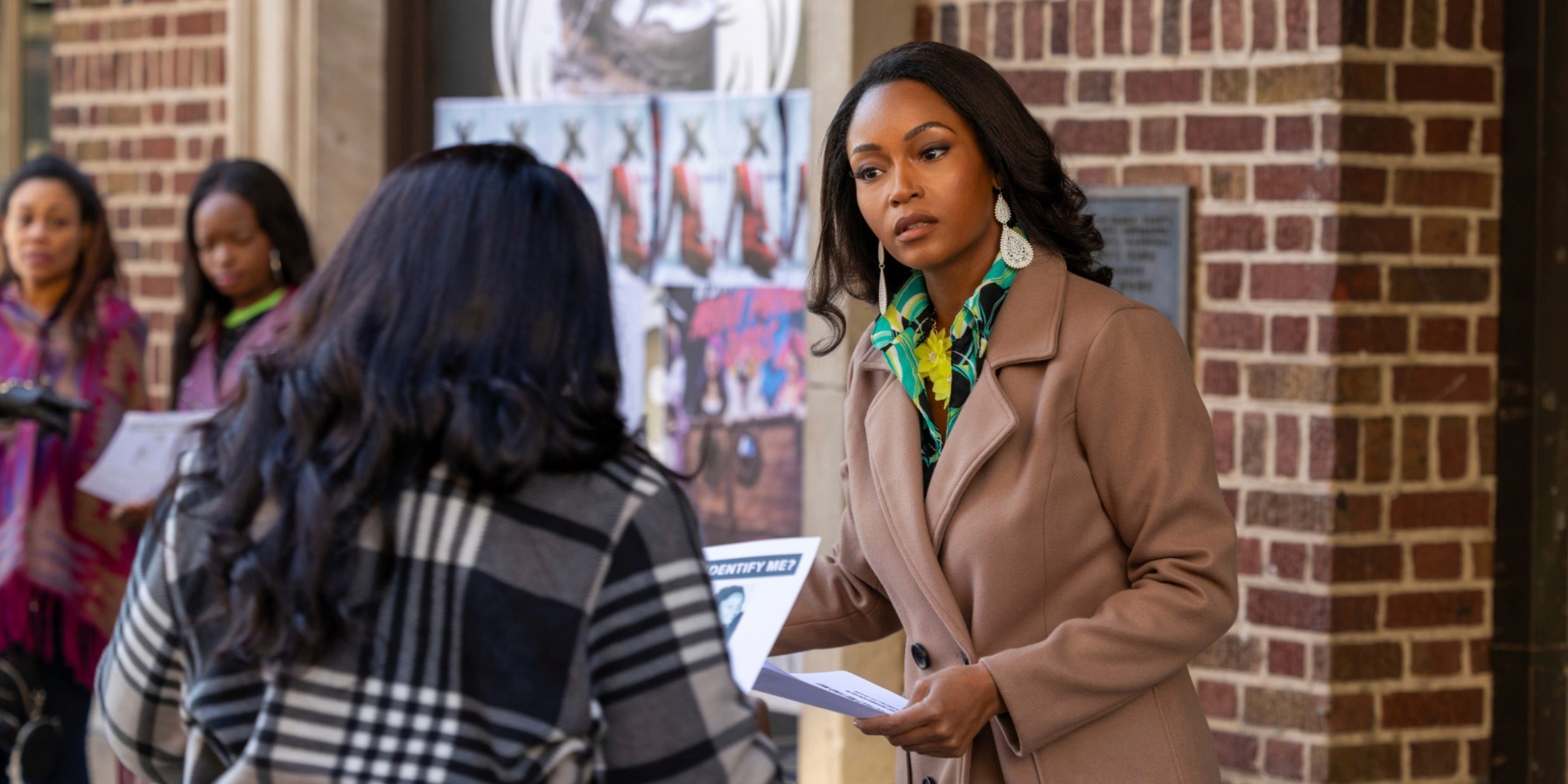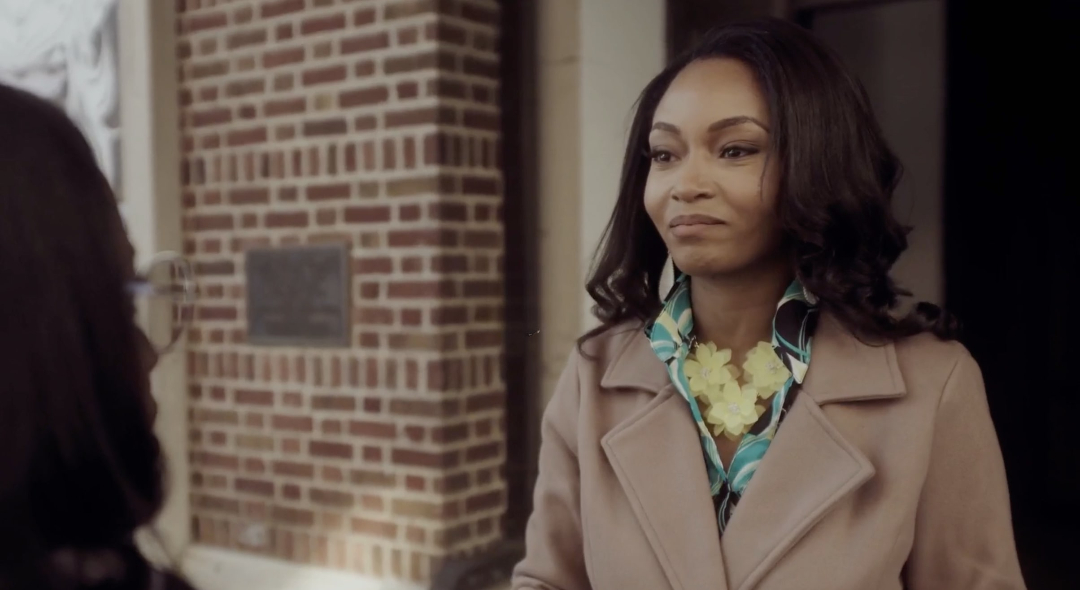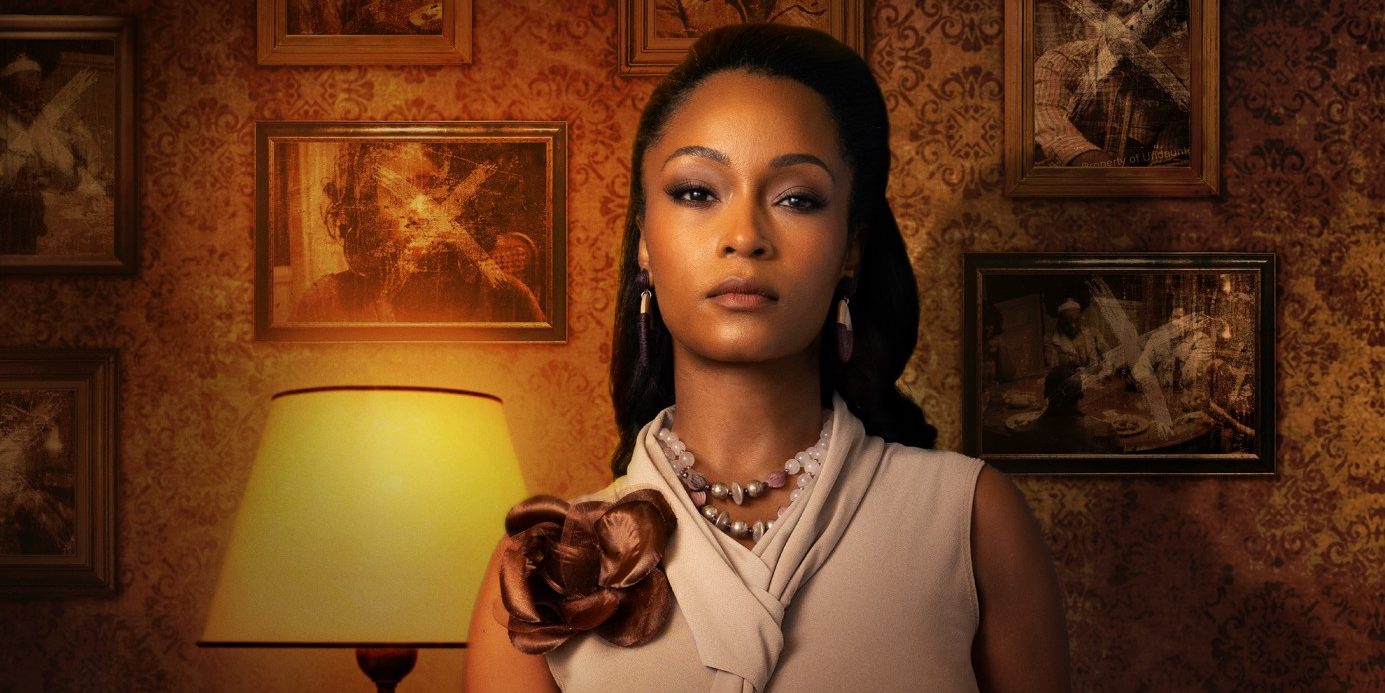Lifetime’s ‘Not My Family: The Monique Smith Story’ is a dark and deeply personal coming-of-age tale drawn from the harrowing real-life experiences of Symbolie Monique Smith. Based on her memoir ‘I Am The Ancestor: Before I Die, I Must Share My Story’ and directed by Tailiah Breon, the film spans nearly five decades—from 1976 to 2025—chronicling Monique’s journey through trauma and eventual triumph. It does not flinch from portraying the various forms of abuse she endured from childhood to adulthood, yet what emerges most powerfully is not just the pain but the resilience.
While abuse plays a significant role, it is Monique’s struggle with her own identity that takes center stage. As she confronts a deep-rooted identity crisis, the story evolves into a search for self—forcing her to uncover who she truly is beneath the scars! SPOILERS AHEAD.
Review: A Harrowing Coming-of-Age Tale That Evolves Into a Powerful Search for Identity
‘Not My Family: The Monique Smith Story’ may follow the structure of a typical coming-of-age drama, but it never allows itself to be boxed into genre conventions. Instead, it presents a raw, unflinching portrait of trauma, survival, and self-discovery. The movie chronicles Monique’s life with a stark honesty that is both heartbreaking and profoundly inspiring. Director Tailiah Breon has crafted a deeply personal story that resists melodrama and instead leans into nuance, letting the protagonist’s pain and resilience speak for themselves. From the outset, the film pulls no punches. We meet Monique as a child navigating her life through a deeply abusive household, with her mother, Elizabeth—the so-called “alpha” of the home—inflicting both emotional and physical torment.

Monique’s childhood experiences are worsened by the prolonged sexual abuse she endures from her uncles, Eddie and Leroy, between the ages of 4 and 18. These early chapters of her life are difficult to watch but are never exploitative. Breon handles the material with restraint and compassion, always anchoring the film from the protagonist’s perspective. What elevates the film is how it refuses to present Monique as a “victim.” Her journey is one of endurance and transformation. Despite the unbearable odds, she finds a semblance of peace and happiness by becoming a loving mother to two children and finding a partnership with her husband, Jonathan. Yet the film doesn’t end with this surface-level resolution. Instead, it pivots to its most poignant theme: identity.
As Monique begins to peel back the layers of her past, the story shifts from survival to self-reclamation. Who is she outside the shadow of her trauma? Who really forms her family? These questions guide the film’s final stretch, which is imbued with a quiet melancholia that crescendos into a moving, bittersweet emotional release. Breon’s movie is intimate and empathetic, capturing the full emotional gamut of Monique’s life without sensationalizing it. It’s a film that understands healing is rarely linear and that sometimes the biggest battles are the ones we fight within ourselves. In telling Monique’s story, the film becomes not just a tale of survival but also one of reclaiming agency, rewriting narratives, and finding light in the darkest corners.
Not My Family: The Monique Smith Story Plot Synopsis
‘Not My Family: The Monique Smith Story’ opens in the year 2000 with a haunting scene set in New York City. Monique, a woman with a mysterious past, is distributing pamphlets featuring photographs of missing children. When a passerby asks if she is searching for her daughter, she delivers a cryptic reply: “No, I am the one who is missing, madam. I need help finding me.” This enigmatic statement sets the tone for the narrative, which then flashes back to 1976, revealing the origins of her troubled journey. In 1976, baby Monique grows up in a toxic household filled with abuse from all family members except her grandmother, who provides her only solace. Despite her grandmother’s love, she reaches a breaking point and decides to escape her oppressive environment.

Monique leaves home with a bundle of money and writes a heartfelt letter to her grandmother. However, her plans quickly unravel when the money is stolen during her bus ride from Baltimore. Stranded at a bus station, she encounters Caroline, a woman who offers her shelter and work. Unbeknownst to her, Caroline’s intentions are sinister—she forces the protagonist into the world of prostitution. Monique struggles to adapt to this harsh new reality but finds herself drawn to a man who promises her a better life. Unfortunately, he turns out to be an addict, and she is left alone again—this time pregnant. With no other options, Monique returns to Baltimore and begins rebuilding her life.
Slowly but surely, things improve for Monique; she secures a job, befriends Rubye, and eventually marries Jonathan. Her life appears to stabilize as she becomes a mother herself. However, motherhood triggers unsettling questions for Monique. She wonders how any mother can harbor hatred toward her child as much as her own mother did. This suspicion leads Monique to question whether the woman she called “mother” was truly her biological parent. As doubts about her identity grow stronger, she embarks on an emotional and literal journey of self-discovery. The narrative unfolds as the protagonist confronts the traumas of her past while seeking answers about who she truly is.
Monique’s quest for identity becomes the central theme of the film—a poignant exploration of healing, resilience, and the search for belonging in an unforgiving world. Through this journey, she seeks not only to uncover the truth but also to reclaim herself from the shadows of her past.
Not My Family: The Monique Smith Story Ending: Who is Monique’s Real Mother?
In the emotional climax of ‘Not My Family: The Monique Smith Story,’ the search for Monique’s true origins reaches its most intense point. The tension between the protagonist and her adoptive mother, Elizabeth, culminates in a heart-wrenching confrontation. After years of feeling abandoned and betrayed by the woman who raised her, Monique demands the truth. Elizabeth, who has always maintained that the protagonist’s biological mother was a drug addict who left her, refuses to give in. In a final, devastating exchange, the old woman angrily declares, “I will go to my grave but never tell you the truth.” These words crush Monique, leaving her feeling like her hopes of ever learning about her real mother have died along with Elizabeth.

At this moment, Monique’s emotional journey seems to reach its bleakest point, but fate has a different plan for her. Just as she begins to lose hope, the phone rings, and it’s the DNA detective she has enlisted to help her uncover her past. The investigator introduces the protagonist to Trinity, a genetic researcher who has been tracking down matches for her DNA. The determined and insightful gynecologist with a deep passion for genealogy has uncovered something truly remarkable. After painstakingly searching through historical records, she discovers a DNA match that traces back to the 1850s, linking Monique to an individual named Margaret, the true mother of the protagonist.
This revelation sends a wave of disbelief and joy through Monique. For the first time in her life, she finally knows who she is. The truth, long denied and buried, is now within her grasp. Her identity is no longer a void, and she can now speak her truth: she has a mother, someone whose legacy stretches back over a century, and she can proudly claim her heritage. The discovery not only answers the question of her biological mother but also provides a sense of closure and self-empowerment that Monique has long been denied. This unexpected twist in the narrative is both cathartic and redemptive.
Monique’s journey, which has been clouded with uncertainty and rejection, culminates in the profound realization that despite the hardships, she is not defined by the lies she was told. Instead, she has the strength to define herself on her own terms, with a newfound sense of identity and connection to her past.
How Did Monique’s Biological Mother Die?
After uncovering the truth about Margaret, her biological mother, Monique is overwhelmed with a deep urge to reconnect with her roots and family. However, fear and uncertainty prevent her from taking immediate action. The weight of the past, coupled with years of abuse and emotional pain, makes it difficult for her to bridge the gap and take the next step. Yet, after some time, she gathers the courage to reach out to Ruth Harrison, the woman she believes to be her elder sister. When Monique finally makes the call, she is struck by Ruth’s initial shock and disbelief. The latter is taken aback by the revelation that the protagonist is, in fact, her long-lost sister, but the confusion soon turns to a need for confirmation.

Ruth asks Monique to send something personal to prove her identity. The protagonist, eager for validation and desperate to find her place within this newfound family, sends Ruth a photograph of herself. This simple gesture marks the beginning of their emotional reunion. When Ruth receives the photograph, she is overcome with joy, confirming that the protagonist is indeed her sister. The bond between the two women begins to heal years of separation and loss. Ruth’s joy is compounded when she shares the news with Monique that she is not alone; she has seven sisters in total, as well as a large extended family of nieces and nephews. This revelation fills the protagonist’s heart with immense happiness as she finally feels a sense of belonging.
Monique’s true identity is ultimately revealed: she is Symbolie Harrison, not the abandoned child she had once believed herself to be. For the first time in her life, she is part of a family, and she can trace her roots back to a history filled with love and connection. Despite the joyous reunion, Monique is still haunted by two unanswered questions that linger in her mind. The first one concerns the death of her mother, Margaret, a mystery that has haunted her since childhood. In a bittersweet moment, she asks Ruth how her mother passed away. Her sister’s response, though factual, is anything but joyful. She tells the protagonist that their mother died from a heroin overdose at a drug house when the latter was around 8 years old.
This revelation is a painful one for Monique, who has always hoped for a more comforting answer. The death of Margaret, coupled with her abandonment, leaves her grappling with a mixture of grief and closure.
Was Monique Abducted as a Child?
Monique’s second question to Ruth is about her own fate as a child—what really happened to her after Margaret’s death? Ruth’s answer is both elusive and heartbreaking. She confesses that she never knew exactly what happened to Monique during those years, but she is certain that the protagonist’s mother had never stopped loving her. This uncertainty leaves Monique with more questions than answers, but it also serves as a reminder that the love her mother had for her was unconditional, even if it was overshadowed by tragedy.

The final moments of the film are incredibly poignant. As Monique is welcomed into Ruth’s home, she is embraced by her newfound family—sisters, nieces, nephews, and children—each of them showering her with love and acceptance. The warmth of their welcome brings Monique to tears as she finally feels the connection and belonging she has been searching for all her life. In a powerful, reflective closing moment, the protagonist expresses her sense of peace: “I may never know what exactly happened to me, but I know I am a survivor. I know I am loved. I know I have roots. My family tree begins with me.”
This cathartic statement encapsulates Monique’s journey from abandonment to self-discovery and love. The film closes with a shot of the real Symbolie Monique Smith, highlighting the true strength of the woman she has become. It is a heartwarming conclusion to a story of survival, resilience, and the transformative power of family.
Read More: Not My Family Monique Smith’s True Story, Explained


